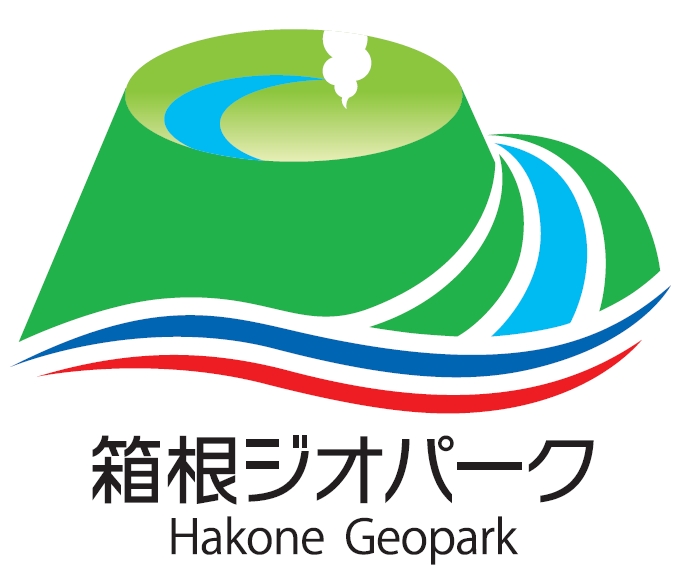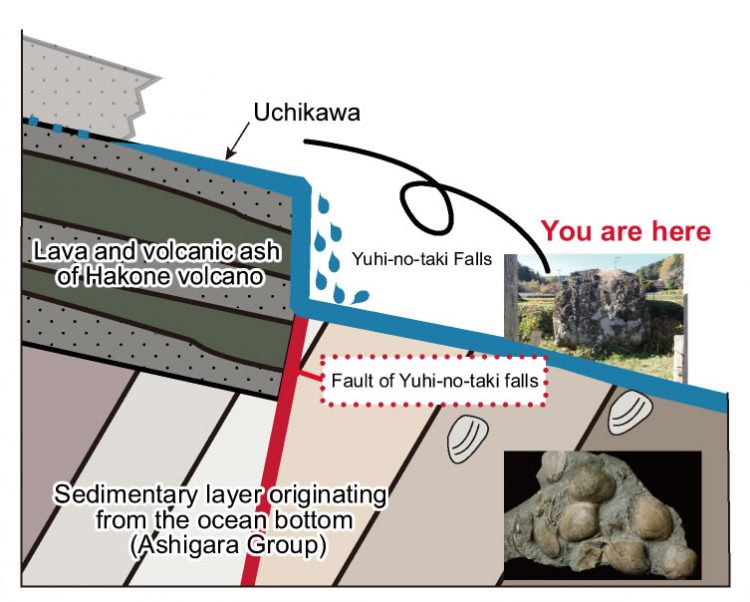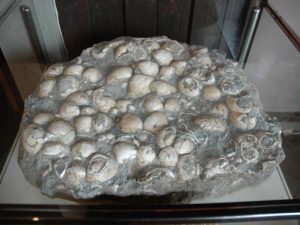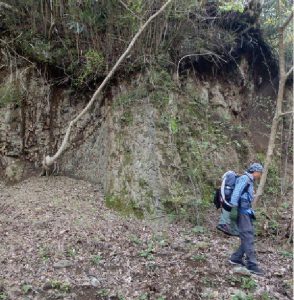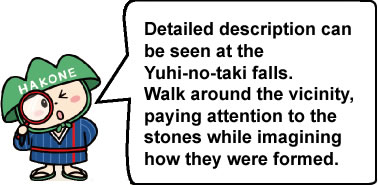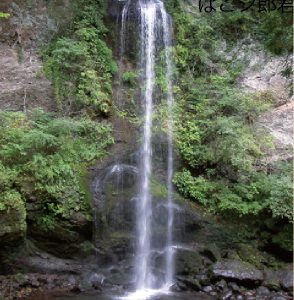Evidence of the Izu Peninsula Collision Around Hamaguri-zawa Valley
The Jizodo area consists of a layer (Ashigara Group) of mud, sand, and gravel that was once at the bottom of the sea and it was sandwiched between the landmass of Honshu and Izu and this layer is covered with lava and volcanic ash from the Hakone volcano.
The legend of the folktale “Kintaro” is attributed to the Jizodo area. Traces of marine stratification (fossil shells) from which the place name “Hamaguri-zawa” has originated, and waterfalls created by the faults can be seen.
According to the legend, Kintaro used to play by throwing rocks from the Yuhi-no-taki falls.
Kintaro Asobi-ishi (play rocks)
Looking at the rock, you could see that the rock is formed by compaction of many size of stones and volcanic ashes. (Volcanic tuff).
From Yuhi-no-taki falls to Mt. Kintokiyama some distance above, volcanic tuff that has originated from the Hakone volcano can be seen.It is said that the rocks have been left behind after it was dislodged downstream by debris flow.
Mi4 Around Hamaguri-zawa Valley – Walking map –
Mi Symbol representing the geosite of the Hakone Geopark Minami-ashigara area.
Eight locations in the city have been certified.
Structures and walking points around Hamaguri-zawa Valley
Period of ocean floor - Approx. 2 to 1 million years ago
Mi4 Around Hamaguri-zawa Valley

Many fossil shells such as that of clams have been found around the Hamaguri-zawa Valley. From which it can be inferred that the sea was shallow around this region.
Fossil specimens are exhibited at the Minamiashigara Local History Museum.
Period of collision and uplift - Approx. 1 million to 700,000 years ago
Vertical rocky outcrop of the Ashigara Group

Rocky outcrop of the Ashigara Group created at the same period as the fossil shells can be seen.
The horizontally deposited strata are almost vertical, from this, the intensity of the plate pressure can be understood to have been very high.
Period of eruption and erosion - Approximately 400,000 years ago to now
Mi3 Yuhi-no-taki Falls
Around this time, the Hakone volcano became active, covering the Ashigara Group with layers of lava and volcanic ash.
In the next stage, Yuhi-no-taki falls was created by fault activity.
A description board can be seen near the Yuhi-no-taki falls.
Symbol
![]() Enjoy the geology of Hakone volcano and its surroundings
Enjoy the geology of Hakone volcano and its surroundings![]() Enjoy the terrain of Hakone volcano and its surroundings
Enjoy the terrain of Hakone volcano and its surroundings![]() Think about the history born from the topography and geology
Think about the history born from the topography and geology
